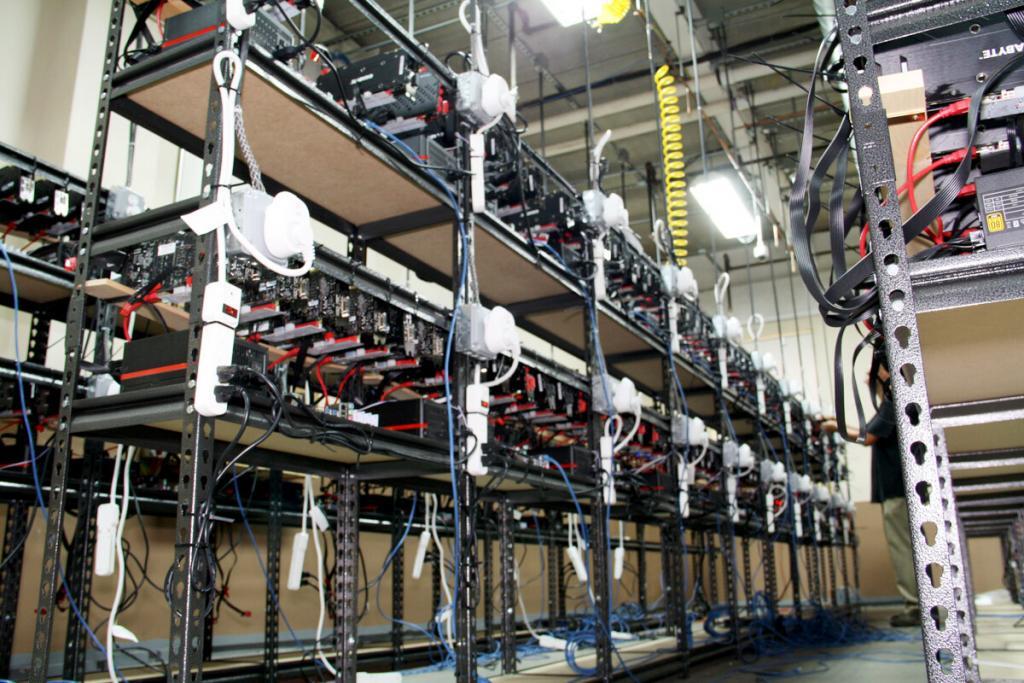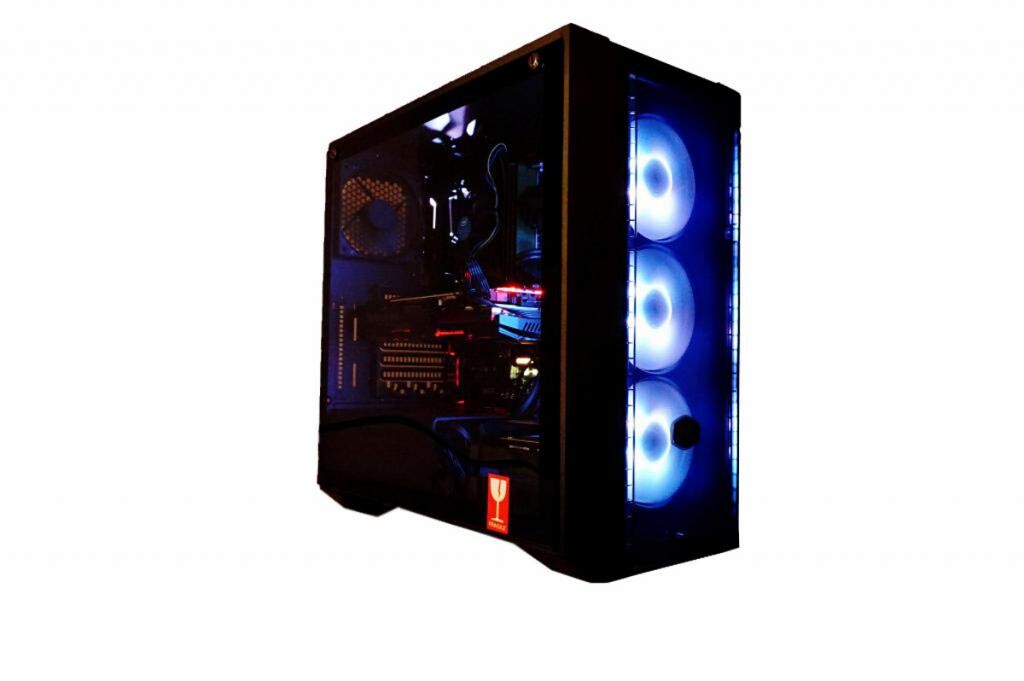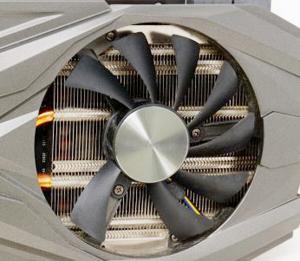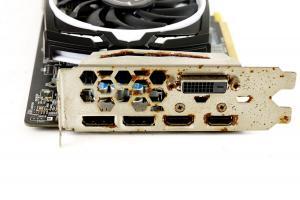You’re eyeing a used graphics card you’ve seen online, but you’re unsure if it’s safe to buy. Your graphics card just stopped working and you’re on a tight budget. You’re building your first gaming computer and you’re not looking to spend a lot. You’re overdue for an upgrade. If any of these sound like you, I’m sure the question you keep wondering is: Is it safe to buy a used graphics card? And more importantly, what if it was used for crypto mining? Let’s get straight to the point and take a look at the factors that affect the answers to that question.
Is a secondhand GPU right for you?
First and foremost, you need to decide if a secondhand graphics card is right for you. Let’s take a look at some of the basics of buying a used graphics card. Like anything, there are positives and negatives to buying used.
Purchasing a secondhand GPU has some very appealing benefits. They’re significantly cheaper than brand new cards; you could save up to fifty percent (50%) off a graphics card by buying used, for something of practically the same quality (a vast majority of secondhand graphics cards are in good condition or better)! Buying an older graphics card also allows you to see the long-term reliability of the graphics card – information that may not be readily available for a newer model. The last great thing about buying a used graphics cards, is that most reselling websites have buyer protections in place to avoid scams and misinformation, with eBay providing the most accessible condition details on the card you’re purchasing.
Secondhand buying does pose some risks and downsides that a new card might not. It’s unlikely that anyone will be selling the newest model graphics card for a great bargain secondhand; if you’re bargain hunting on secondhand websites, you should be comfortable buying a graphics card that’s a few models old. Another risk is that the likelihood of having a manufacturer warranty in place isn’t high. That doesn’t mean the card is bad or destined to fail, but it does add a potential layer of concern.
One last option to consider, is that LEDs and other visual accessory features may be cool to look at but tend to be one of the first things to fail on a card. This can work to your benefit, making a graphics card that’s perfectly functional with some LEDs that aren’t working less marketable, and therefore cheaper. But if you’re excited about working LEDs, it does add an additional risk in buying secondhand.
If you’re looking to play the newest games on ultra-settings, or if you don’t want to deal with any potential for risk, a used graphics card may not be for you. If you’re just looking for good graphics and smooth gameplay, and you’re careful where you shop, a secondhand graphics card is probably a great option for you.
Is the card in good, working condition?
Buyers often don’t give this question enough consideration and then end up missing out on a great deal or end up disappointed because they bought before reading through the card listing completely. Often the shortcut they’ll take is to ask: “Was this GPU used in crypto mining?”. Which is essentially the same as asking “Was this GPU used?” for reasons that we’ll cover next.
So, is buying a GPU used for crypto mining safe?
The short answer is yes. It’s a myth that mining harms graphics cards. As long as you’re buying a card that was used by a professional, it’s likely in better condition than a graphics card used by a PC gamer. Mining is a purely profit driven enterprise, and power efficiency is the number one factor to success. This means that they are going to undervolt and run the hardware well below its maximum capacity in order to squeeze out the maximum hashpower per watt – typically 60-70%. Professional miners also know that one of the long-term factors in success is maximizing resale value by properly maintaining their hardware. With the onboard fans being one of the most likely failure points, professional miners will run the fans at the lowest speed possible and supplement cooling capacity with high powered industrial fans that move massive amounts of air through their facility. Cards used by professional miners tend to be stored in a well ventilated and cooled environment and are not likely to suffer heat damage, whereas a graphics card used by a gamer or home user tends to be stored long term in a hot dusty box in a corner. Even worse, a large portion of gamers will overclock their hardware to the edge of stability, which causes far more long-term damage than gently using the hardware 24/7. You could think of it in terms of miles on a car: on the one hand, the miner drives long distances at or below the speed limit and performs regular maintenance and the performance gamer typically loves flooring it, albeit for shorter periods of time. In this case, slow and steady wins the value race in this case.

As good as that sounds, you may still be wondering – if they’re in such good condition, why are the professionals getting rid of these cards? In few words, mining is very competitive, and to keep up with the competition professional miners are constantly upgrading hardware. On the other end of that, some professionals don’t have the time and resources to dedicate to the competition anymore. Either way, the most common reason for selling off mining GPUs is simply overstock.
The main concern for someone buying a mining graphics card for gaming should be if the stock BIOS has been restored.
If the seller is open about the history of the card and is able to confirm that it has the stock BIOS, a mining graphics card is just as good if not better than a graphics card previously used for gaming.
Bottom line: the manner of use doesn’t matter so much as specifics of the card’s condition, which a reputable seller will make clear in the listing. Don’t be afraid to ask the seller if the listing isn’t clear.
Now with the ground rules for buying a used graphics card dealt with, let’s move on to making the right selection for you.
Which card is right for my PC build? Get specific: match the specs of the card to your computer.
The first step to buying a used graphics card (or anything!) is knowing what you want to buy. Take some time to research a few graphics cards you like and narrow it down to a handful of options.
First and foremost, make sure the graphics cards you’ve got your eye on are compatible with your motherboard. The best way to check this is to find your motherboard on the manufacturers website and find the specific port it has and read the specifications of the graphics cards you’re looking at. The most reliable information always comes from the manufacturer’s website.
The second most important thing to keep in mind is your power supply. Particularly if you’re upgrading an existing build or replacing a dying graphics card, your power supply may not be up to par with the demands of some newer graphics cards. Some more high-powered graphics cards require up to a 750W power supply, and the standard minimum is around 500W. Also, in regard to the power supply, make sure you know if the graphics cards you’re looking to purchase require extra PCIe power connectors. Power requirement information should also be easy to find on the graphics cards manufacturer website.

An important thing to be aware of is the capability of your monitor. If your monitor is a bit older than the graphics cards you’re looking at, there’s the potential that the graphics card ports aren’t compatible with the cable you currently have, or that the graphics cards resolution is much higher than the capability of your monitor. If the cable is incompatible, it’s usually as simple as purchasing the correct cable or adapter with the graphics card. If your monitor has a lower resolution than the graphics cards you’re looking to purchase, you’re only going to experience the resolution of the monitor and not the full capability of the card. That may not be an issue for you, or you may wish to upgrade your monitor as well. The third option is to select a bit of an older graphics card, you’ll save a bit of money buying something with a lower resolution, and you’ll be getting the full potential out of the cards.
Where should I look to buy a used graphics card? Major retailers to classified ads
Now that you know which graphics card models you’re interested in buying, it’s time to look at the purchasing process. You have two key factors to consider; where to buy from, and who to buy from. Both are important things to consider when buying a used graphics card.
First, you should decide on a website to purchase a graphics card from; there are some great options available, such as Newegg, eBay, Amazon, Craigslist, and even Reddit. But they all pose varying levels of risk. The riskiest of the bunch are Craigslist and Reddit, as they’re mostly based on honesty and trust with a large component of anonymity and without inherent buyer protections. These two websites don’t necessarily have guidelines and a set of help agents ready to assist when a sale goes wrong. You can find some great deals, but you can also find some real duds and have almost no way to return the item, save for the seller being reasonable (which there is no guarantee of). If you do go with one of these methods, use a payment method that can offer some buyer protection. Cash & cryptocurrencies like bitcoin heavily favor the seller in terms of the finality of the transaction once the goods and payment are exchanged.
The safest options are Newegg, eBay, and Amazon. They are websites that have tried and proven methods of selling secondhand items safely for both parties involved; having a third-party mediator that can step in in the event of a problem makes for a much safer transaction. Take some time to investigate the buyer rights on each website and other policies that may affect you and choose what sounds the most right for you.
After you’ve chosen your platform of purchase, look at multiple listings for the graphics cards you’re considering and compare pricing on used items. Just keep in mind that a price that seems too good to be true, probably is. An item marked down 10-20 dollars is probably priced to sell quickly, wherein an item marked down 50 dollars might have some underlying issues.
When narrowing down the seller/specific item you’re going to purchase, keep an eye on ratings and reviews. Keep in mind that even if someone has sparkling reviews, if there’s only five or ten of them it doesn’t necessarily mean the seller is reliable. Look for sellers with more than one hundred reviews that have still managed to maintain high ratings and standings. Look at some of their other listings and see how much care they take with their products. Are there clear images with visible product identifiers? Do they clearly indicate their shipping and return policies as well as any guarantees they may or may not have? Those are signs of an honest seller.
The last thing to consider is if they take the time to respond to any questions you may have. If they answered every question you have in their listing and have great reviews, go ahead and purchase your item with confidence. If you’re unsure about anything, you should feel comfortable reaching out and satisfied with the answer you receive.
How do I tell if it’s in good condition before I buy?
Now that you’re ready to add this item to your cart and checkout, just take a minute or two to really review the images and description of the listing. Some clear warning signs of a dishonest listing are lack of information, poor photograph quality, and no return policy whatsoever. Make sure you read the descriptions thoroughly so you’re not purchasing a damaged item by mistake. Many sellers list damaged or non-functional items for parts, which should be clearly indicated in the condition of the item, title, and description.

Some visual warning signs to consider when looking at images are discoloration and warping on the board of the card (although take discoloration with a grain of salt; lighting and reflections can make a card appear to have some discoloration where it may not). Board warping can be a sign of overheating issues. Look for signs of rust or other corrosion on metal portions of the card, as well as dirt and dust.

For graphics cards, good images will include all ports, the fans, the power connectors and the identifying manufacturer information. Check for bent pins and signs of heat damage around ports.
Buying a used graphics card may seem a bit overwhelming when you’re first considering it, but hopefully this article helped ease some concerns you’ve been having. Be smart, ask questions, do your research, and buying a secondhand graphics card can be one of the best purchases you’ve ever made for your gaming computer no matter the history of the card.
Happy gaming!
